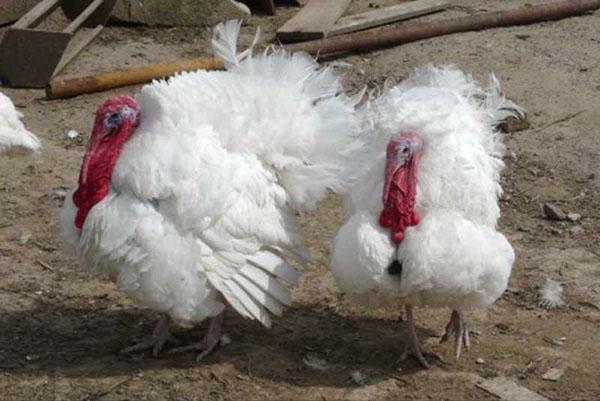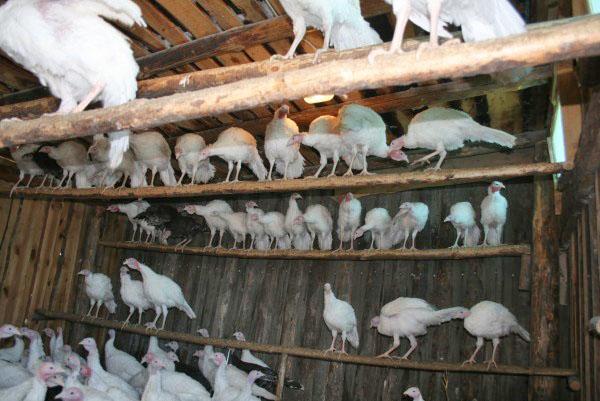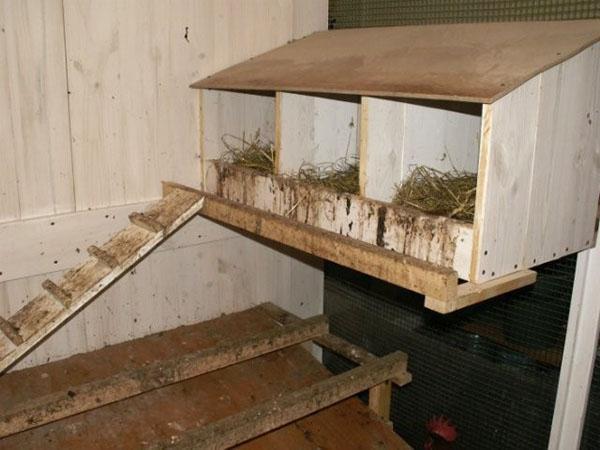White wide-breasted turkeys in your backyard
 Wide-breasted white turkeys - growing and caring for this poultry is not only interesting, but also profitable. In order to get excellent dietary meat, you need to choose the right breed and adhere to simple maintenance rules.
Wide-breasted white turkeys - growing and caring for this poultry is not only interesting, but also profitable. In order to get excellent dietary meat, you need to choose the right breed and adhere to simple maintenance rules.
- Favorable conditions for keeping turkeys

 Turkeys not whimsical, however, they need to create favorable conditions in which the birds will feel comfortable and not get sick. How to keep turkeys at home:
Turkeys not whimsical, however, they need to create favorable conditions in which the birds will feel comfortable and not get sick. How to keep turkeys at home:
- in summer, the temperature in the room should not exceed +20 ° С, and in winter not lower than -5 ° С (if necessary, you must install a stove to maintain heat);
- special holes (hoods) are made on the walls of the shed so that it is well ventilated;
- birds are afraid of dampness and drafts, such conditions have a detrimental effect on them;
- straw or sawdust bedding is changed 2 times a week.
At different times of the year, broad-breasted white turkeys need special feeding and care. In summer, you can equip a playground and make sheds where they can walk freely. Be sure to supply drinking bowls and feeders. It is necessary to supplement the diet with fresh grass, for example, alfalfa, clover.
In winter, at a temperature of no more than -5 ° C, turkeys are allowed outside. If the temperature drops below, then it is necessary to scatter straw on the snow, this will protect the birds from freezing.
Feeding turkeys at home
 The successful rearing of poultry depends on proper and balanced nutrition. The main diet of turkeys should be grain and compound feed. In the summer, it is important to give more greens: carrot tops, green onions, dandelions. Birds love wheat, barley and corn; dry grain is best served in the evening. Birds perfectly eat both dry and wet mash (it is better to give it in the morning and at lunchtime).
The successful rearing of poultry depends on proper and balanced nutrition. The main diet of turkeys should be grain and compound feed. In the summer, it is important to give more greens: carrot tops, green onions, dandelions. Birds love wheat, barley and corn; dry grain is best served in the evening. Birds perfectly eat both dry and wet mash (it is better to give it in the morning and at lunchtime).
In winter, birds need vitamins, which are found in common vegetables: carrots, beets, cabbage. During the summer season, experienced farmers stock up on hay and give it to turkeys soaked in winter.
Cabbage is an essential ingredient for turkeys, regularly adding it to the diet, poultry meat will be soft and tender.
How to raise turkeys at home
 Compared to other young poultry, turkeys are the most resilient. The main thing that they require is a calm and comfortable environment. At home, growing white broad-breasted turkey poults begins with choosing a warm place. It can be a box, its bottom is covered with straw or shavings. Their house must be constantly lit, it is important to maintain one temperature not higher than + 37 °.
Compared to other young poultry, turkeys are the most resilient. The main thing that they require is a calm and comfortable environment. At home, growing white broad-breasted turkey poults begins with choosing a warm place. It can be a box, its bottom is covered with straw or shavings. Their house must be constantly lit, it is important to maintain one temperature not higher than + 37 °.
The bottom of the box should not be covered with newspaper, as the legs of the turkey poults slide on it and are injured.
Babies need to change the water 3 times a day, adding only warm drink. It is important to feed the chicks at least 8 times. In the first month, the diet should be small cereals and boiled eggs. Large grains and grass are gradually added:
- young nettle;
- clover;
- leaves cabbage;
- green onions and lettuce;
- alfalfa.
 The diet is supplemented with special compound feeds filled with vitamins, which accelerate the development of healthy chicks. Turkey poults need vitamins A and B, as well as animal proteins.
The diet is supplemented with special compound feeds filled with vitamins, which accelerate the development of healthy chicks. Turkey poults need vitamins A and B, as well as animal proteins.
Twice a week you need to disinfect the gastrointestinal tract with a weak solution of potassium permanganate.
The first months, chicks of white broad-breasted turkeys require special feeding and care, but then they will grow well. Adults are not whimsical at all, so breeding this type of bird will be a pleasure.